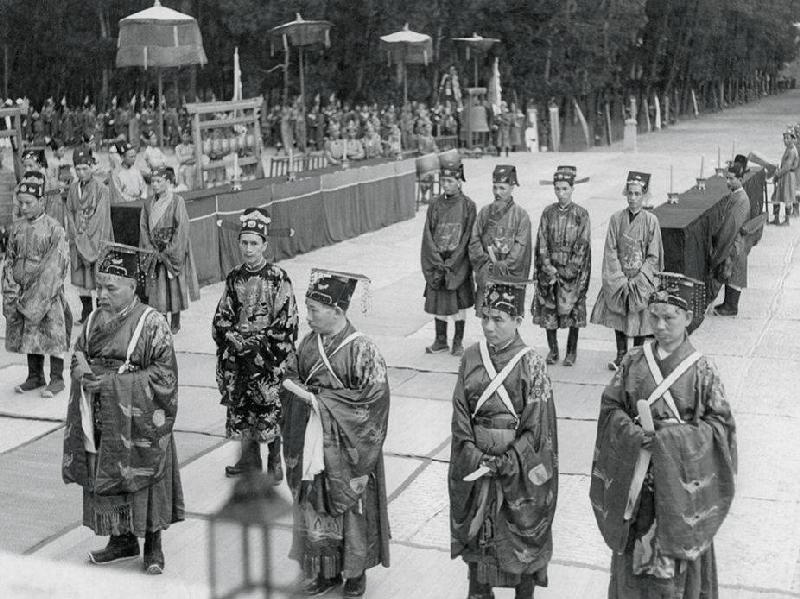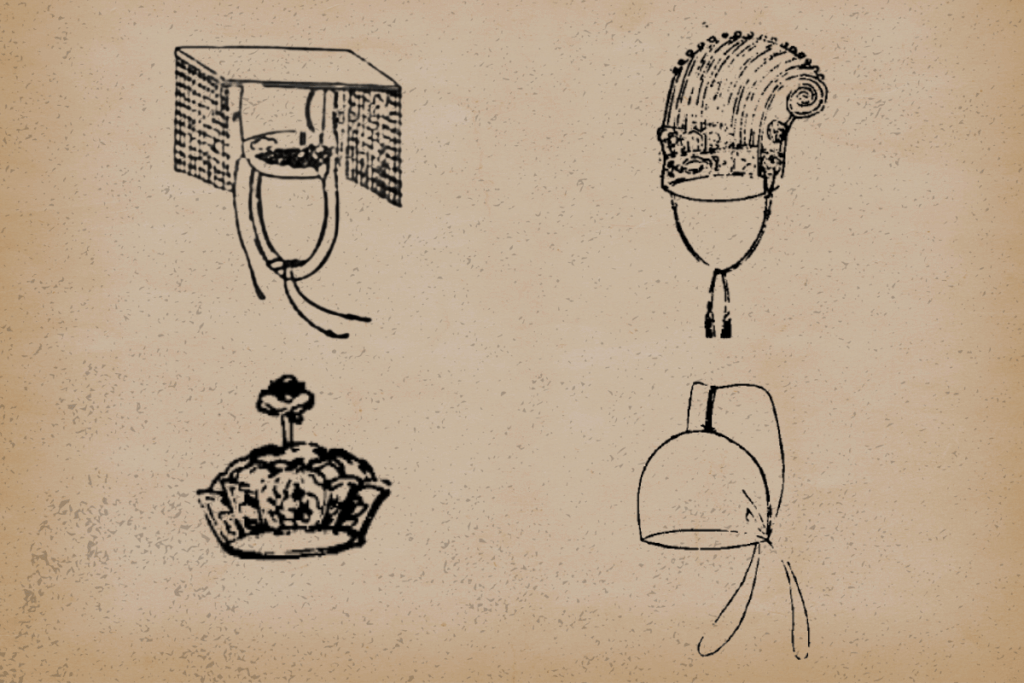Nguyen Dynasty Imperial Attire: The Last Vestige of Vietnamese Feudal Court Dress
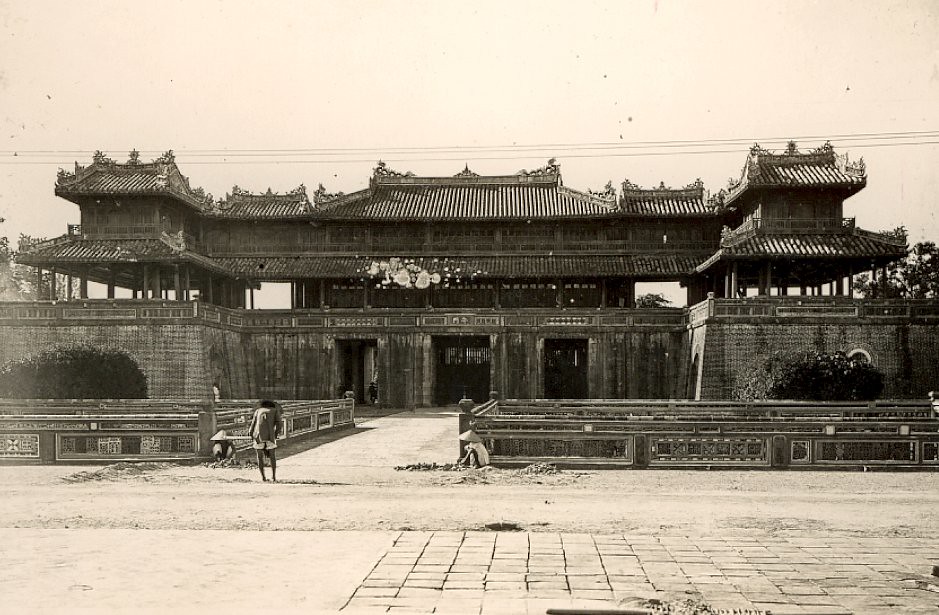
The Nguyen Dynasty (1802–1945), as the last feudal dynasty in Vietnamese history, inherited, developed, and left behind a vibrant and intricate system of court costumes. Before Western culture and ideology profoundly influenced Vietnamese life, under the reigns of Emperors Gia Long, Minh Mang, Thieu Tri, and Tu Duc, Vietnam remained a staunchly Confucian nation, resolute in preserving its traditions to the very end. Consequently, the imperial attire of the Nguyen Dynasty not only reflected the emperor’s supreme authority but also showcased a fascinating blend of Confucian tradition, Chinese cultural influence, and unique creative elements of Daiviet
Coronation Robe and Crown
Cổn Miện originated in the Ly – Tran dynasties, and by the Early Le period, it was standardized according to a 12-chapter system. During the Nguyen Dynasty, this ceremonial attire continued to be affirmed as the supreme garment of the emperor, reserved only for the Heaven Worship Ceremony (Tế Giao) and other grand, solemn rituals.
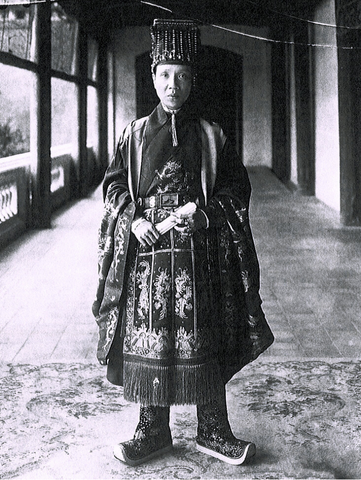
Emperor Khai Dinh wearing the Cổn Miện Attire
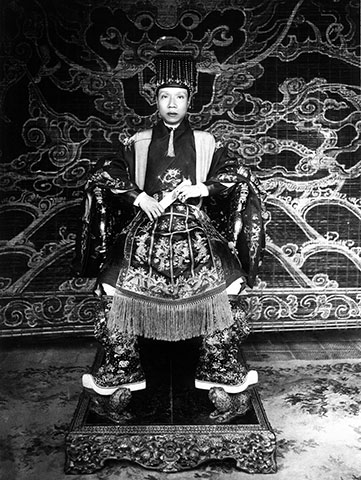
Emperor Khai Dinh wearing the Cổn Miện Attire
Compared to the Le Dynasty, Nguyen’s Cổn Miện had several distinct differences: the Cổn robe was combined with a Thường (skirt) and a round-necked Kế y (inner garment); the Miện crown retained its original structure with 12 strings of beads (lưu) but featured more elaborate jewelry details, using golden silk cords (thùy anh) instead of red ones. Nguyen’s Cổn Miện thus simultaneously continued tradition and bore its own unique identity, intrinsically linked to the emperor’s legitimate mandate and heavenly destiny.
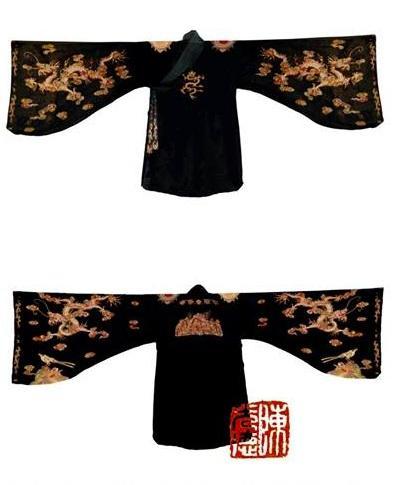
Emperor Khai Dinh wearing the Cổn Miện Attire
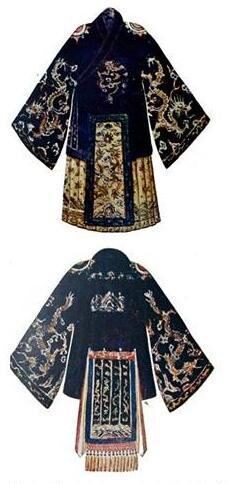
The Cổn Miện Ceremonial Attire of the Nguyen Dynasty
Spring-Autumn Ceremonial Attire
In addition to the Cổn Miện, Nguyen emperors also had specific ceremonial robes for various religious and sacrificial rites. During Emperor Gia Long’s reign, the Spring-Autumn ceremonial attire regulations varied depending on the scale of the ceremony. At least three forms of Xuân Thu attire were applied for the emperor on occasions such as the Đại Điện, Cửu Ngu, Tốt Khốc, Luyện, Tường, and Đàm sacrifices. During Emperor Minh Mang’s reign, the Spring-Autumn ceremonial attire regulations were simplified, standardized as a black Spring-Autumn hat combined with a sky-blue Giao lĩnh robe.
The Spring-Autumn hat, made of black silk, was adorned with a silver flower and an inlaid sparkling crystal bead. It featured a single vong cân (hat string) with four silver rings.
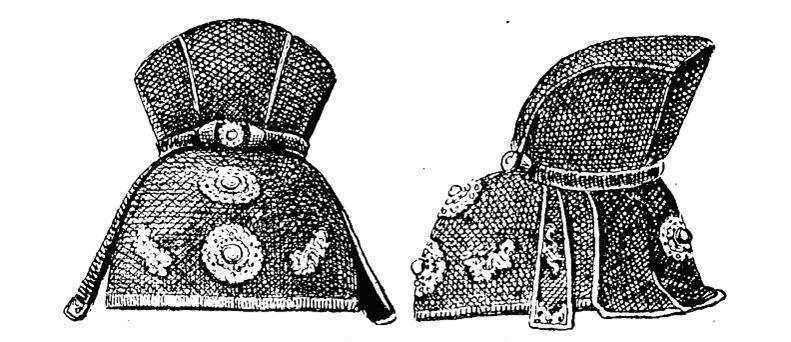
The Xuan Thu Hat of a Fourth-Rank Military Mandarin
The Giao Lĩnh robe was made of pure silk, in a sky-blue color, with a snow-white pure silk lining, both embroidered with patterns of dragons, clouds, and waves. Alternatively, the robe could be made of eight-thread cloth, sky-blue color, embroidered with dragons and clouds, and lined internally with 12 diagonal jade-blue peony flowers. The collar and two hanging ribbons (thùy lưu) matched the color of the robe.
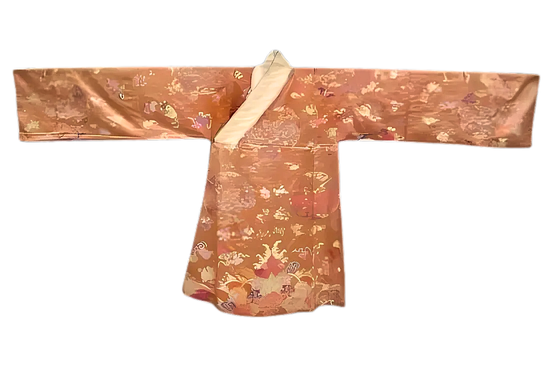
The original Giao Linh Robe (Nguyen Dynasty Artifact
Imperial Court Attire
During court sessions, especially the Grand Court, on the first and fifteenth days of the lunar month, and the Regular Court, the Nguyen Emperor wore a yellow imperial robe with the Cửu Long Thông Thiên hat (a type of Xung Thiên hat).
The Nguyen imperial robe inherited patterns from the Le Trung Hung period, featuring the “Long vân đại hội” (gathering of dragons in the clouds) motif and two flaps at the back. However, the distinct difference lay in its overwhelming intricacy: dragons, clouds, waves, Eight Treasures (bát bảo), antique motifs (cổ đồ), corals, railings, etc., appeared densely. Compared to the dragon robes of the Early Le, the Nguyen imperial robe was more elaborate, creating a radiant majesty that highlighted the dynasty’s emphasis on ritual.
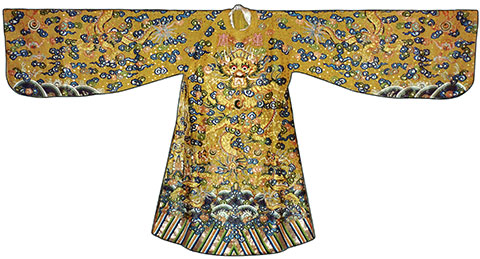
The emperor’s imperial robe, worn during the Grand Court Session
The Cửu Long Thông Thiên hat had two wings rising towards the sky, adorned with nine dragon figures and details made of gold and jade. This hat symbolized the emperor’s transcendence and supreme power, differing from the simpler Xung Thiên hats of the Le era.
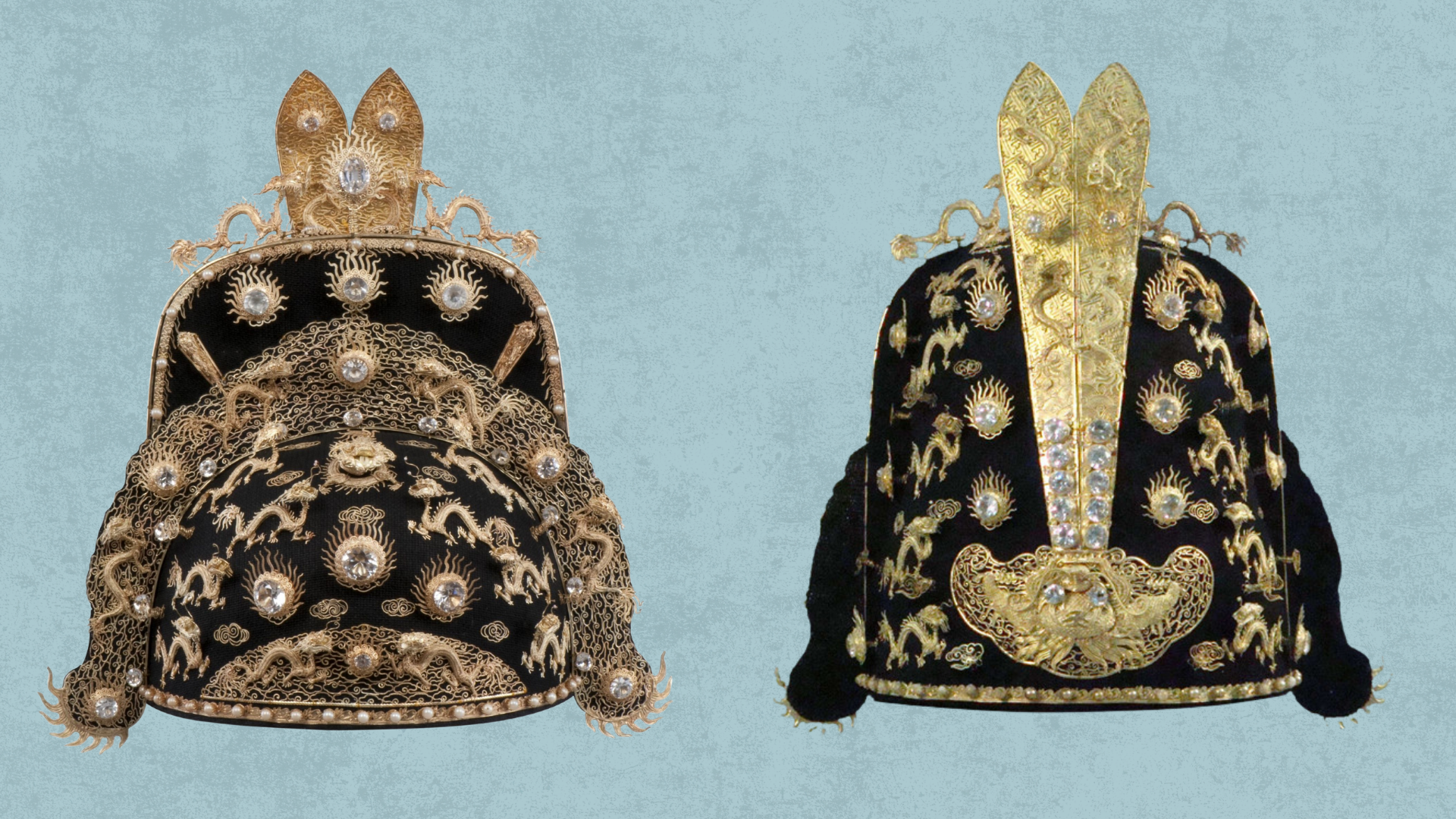
The Cửu Long Thông Thiên Hat of the Nguyen Emperors
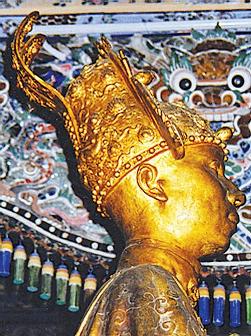
The Cửu Long Thông Thiên Hat on
the Statue of Emperor Khai Dinh
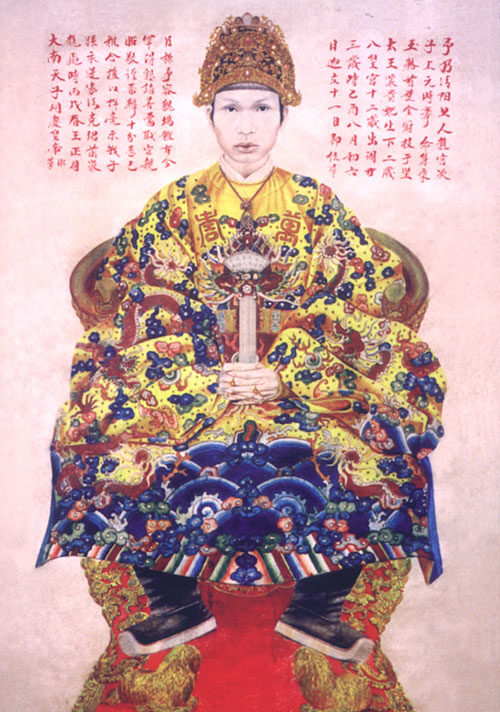
Emperor Dong Khanh wearing
the Cửu Long Thông Thiên Hat
Imperial Daily Wear
It is known that, besides ceremonial and court attire, Nguyen emperors also had daily wear used in everyday life or less formal rituals.
The imperial daily hat for Nguyen emperors was the Cửu Long Đường Cân, a type of hat seen in portraits of Emperors Tu Đuc, Đong Khanh, and Thanh Thai. This hat featured a raised nape, a rounded crown curving forward, and flaring out on two sides into an “八” (bát) shape. Additionally, there was the Thất Long Đường Cân hat, which appeared in portraits of Crown Prince Bao Đai and Crown Prince Bao Long.
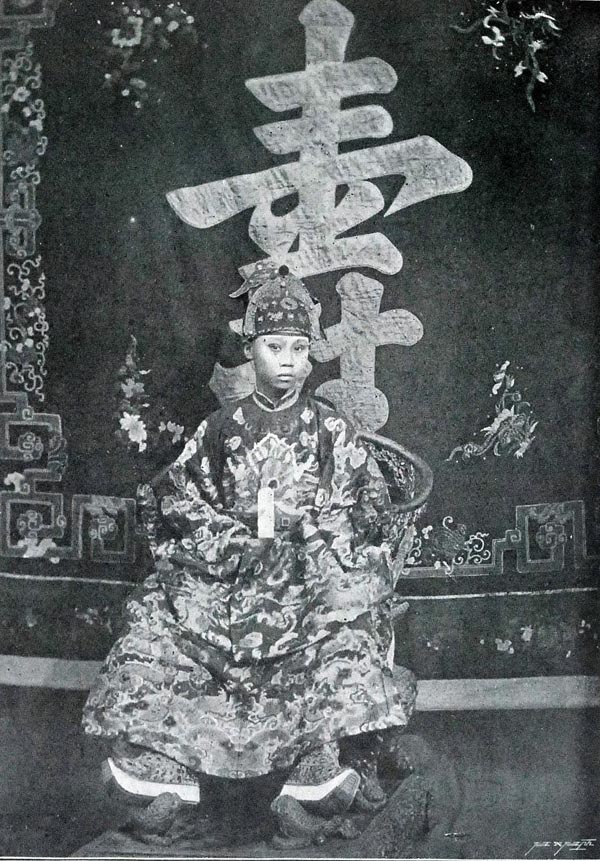
Emperor Thanh Thai
wearing daily attire
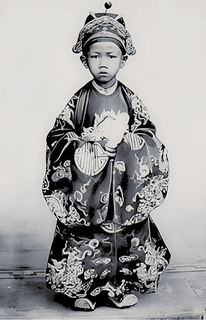
Emperor Duy Tan
wearing daily attire
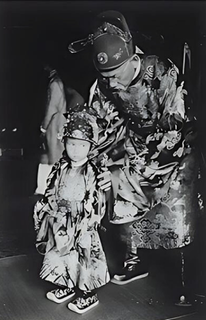
Photograph of
Crown Prince Bao Long
Combined with the Đường Cân hat was the imperial robe. However, it should be noted that the imperial robe used in daily court had a different decorative pattern layout compared to the imperial robe used in grand court, featuring more wave patterns, antique motifs, Eight Treasures, along with characters for Phúc (Happiness), Lộc (Prosperity), and Thọ (Longevity), all crafted from pearl beads.
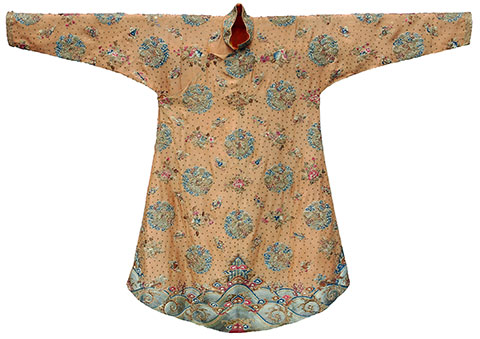
The Emperor’s imperial robe is worn during the regular court session
Emperor’s Military Attire
When reviewing troops or participating in military-related activities, the emperor donned specific military attire. During Emperor Minh Mang’s reign, military attire maintained traditional forms: a narrow-sleeved imperial robe combined with the Vo Dai Long hat. By Emperor Khai Dinh’s time, imperial military attire began to incorporate European elements, such as Western-style cloaks, epaulets indicating rank, and European-influenced hats. This unique blend illustrated the court’s adaptation to the pressures of Western culture.
Under Emperor Khai Dinh, many of the emperor’s garments were self-designed by him, even the Cổn Miện for the Heaven Worship Ceremony underwent “innovative” changes. Notably, a military attire combining a narrow-sleeved, four-paneled robe (used for the Tịch Điền ceremony) with European attire, paired with a conical hat or turban, stood out. In a context where other East Asian countries rigidly copied Western styles, this unique blend became Khai Dinh’s distinct mark and that of his reign.
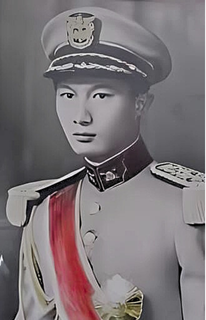
Military Attire of
Crown Prince Bảo Long
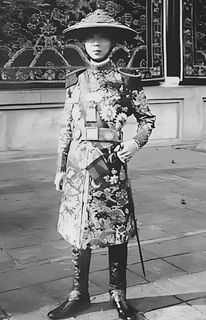
Military Attire of
Emperor Khai Dinh
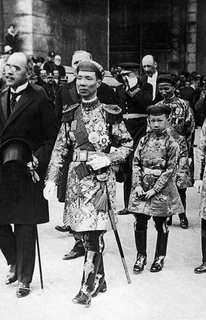
Emperor Khai Dinh
traveling to France
The imperial attire of the Nguyen Dynasty both adhered to Confucian established regulations and demonstrated the adaptive spirit of Vietnamese culture. From the inheritance of the Cổn Miện to the transformations in the imperial robes, and even the adoption of Western elements in the final phase, all these aspects create a multifaceted picture of court dress, testifying to the continuity, evolution, and creativity of the Vietnamese people throughout a turbulent period of history.








